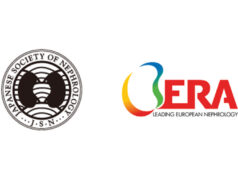 A novel study, presented at the 61st European Renal Association (ERA) congress (23–26 May, Stockholm, Sweden) and recently published in the New England Journal of Medicine (NEJM), has uncovered what researchers refer to as a “significant breakthrough” in the diagnosis and monitoring of kidney diseases associated with nephrotic syndrome, which is linked to kidney diseases such as minimal change disease (MCD), primary focal segmental glomerulosclerosis (FSGS), and membranous nephropathy (MN).
A novel study, presented at the 61st European Renal Association (ERA) congress (23–26 May, Stockholm, Sweden) and recently published in the New England Journal of Medicine (NEJM), has uncovered what researchers refer to as a “significant breakthrough” in the diagnosis and monitoring of kidney diseases associated with nephrotic syndrome, which is linked to kidney diseases such as minimal change disease (MCD), primary focal segmental glomerulosclerosis (FSGS), and membranous nephropathy (MN).
Using a hybrid technique, researchers identified anti nephrin autoantibodies as a reliable biomarker for tracking disease progression, opening new avenues for personalised treatment approaches. The study took place across Europe and the USA and, according to Tobias B Huber (University Medical Center Hamburg- Eppendorf, Hamburg, Germany) et al, introduced a “novel approach combining immunoprecipitation with enzyme-linked immunosorbent assay (ELISA) to reliably detect anti-nephrin autoantibodies”.
Huber et al’s findings revealed that anti nephrin autoantibodies were prevalent in 69% of adults with MCD, and 90% of children with idiopathic nephrotic syndrome (INS) who had not been treated with immunosuppressive drugs. The authors of the study also highlight that the levels of these autoantibodies correlated with disease activity, suggesting potential as a biomarker for monitoring disease progression.
Researchers administered laboratory-made nephrin protein to mice, creating a condition akin to MCD in the mice, so as to further investigate the impact of nephrin immunisation on kidney function and disease. They found that this led to the phosphorylation of nephrin, as well as notable alterations in cell structure, which they state indicates the involvement of antibodies targeting nephrin in podocyte malfunction and nephrotic syndrome. Unlike other models necessitating multiple immunisations, the researchers found that this model induced swift disease manifestation with a single immunisation, even at low antibody concentrations.
Diagnosing these conditions has previously posed a challenge, due mainly to overlapping histological features and hesitancy to conduct invasive kidney biopsies, particularly in children. While anti nephrin autoantibodies have been observed in patients with MCD and FSGS, their precise role in the advancement of these diseases is, according to the study, not fully understood.
Commenting on the recenty published data, Huber, lead author of the study, said: “By providing insights into underlying mechanisms, these findings lay the groundwork for personalised interventions and pave the way for a new era of precision medicine for these complex conditions.












